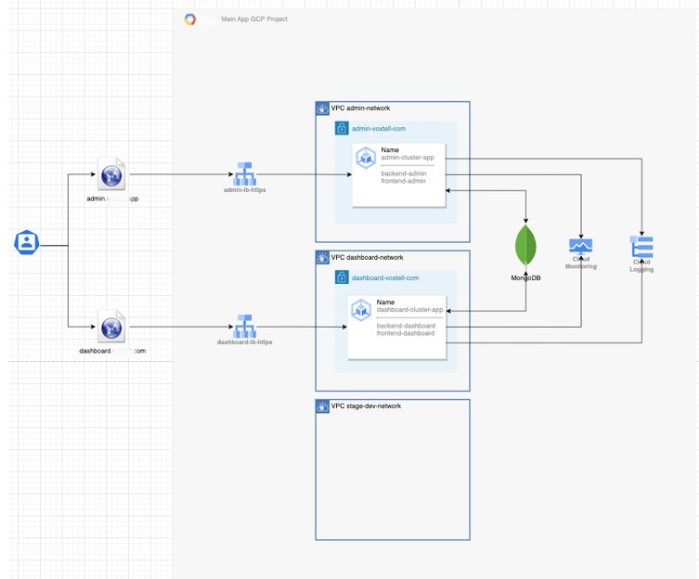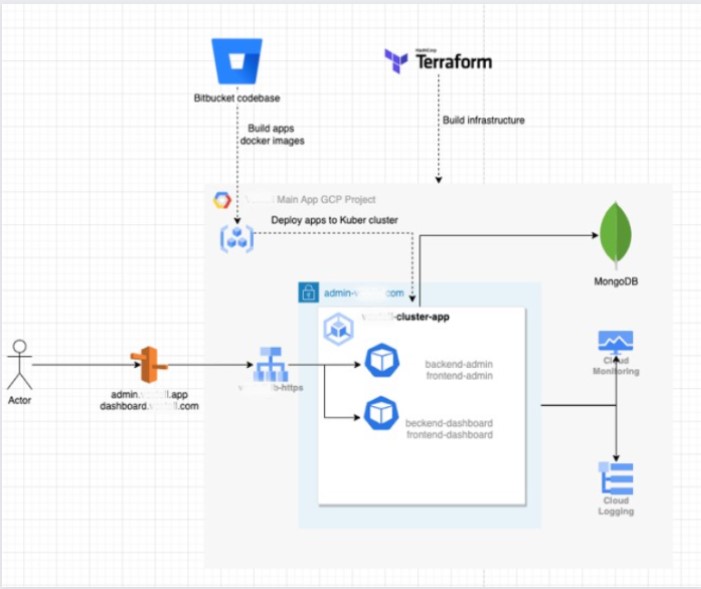Background
Our client has developed a versatile phone system solution aimed at assisting small businesses in establishing more convenient connections with their customers. Their cloud-based solution encompasses phone calls, video calls, messaging, and even fax services to enhance customer satisfaction and team productivity in an all-in-one application.
Challenge
The client, operating in the highly competitive SaaS industry, faced significant challenges related to the application release process and the cost of cloud storage, as they created numerous products by being a startup.
Their existing infrastructure and applications struggled to meet the growing needs of the business, so there was an urgent modernization effort to improve performance and scalability.
Their infrastructure couldn’t cope with the ever-increasing load, posing a threat to their ability to serve their customers effectively.
Solution
The client partnered with us, a DevOps service provider, to address the challenges and redesign a modern, cost-effective, and secure infrastructure solution.
The journey towards optimization began with infrastructure consulting, aiming to enhance operational efficiency and elevate the overall customer experience.
a) IT Infrastructure Consulting
Our team of experts closely collaborated with the client to conduct an assessment of existing systems and design a customized roadmap for improving the IT infrastructure strategy.
During the IT Infrastructure Audit, it was observed that the main environment consists of multiple clusters to manage one platform. Also, the GKE cluster has been configured in autopilot mode, which has an impact on infrastructure costs.
We recommended segregating environments across multiple GCP projects, each with a distinct VPC. Additionally, an exclusive Kubernetes cluster is allocated for the staging environment. While this cluster may not necessitate the scale of the production environment, it ought to mirror its configuration closely.

Picture 1: “Existing IT Infrastructure of the Project”
As the outcome of IT Infrastructure Consulting Services, Gart made conclusions and provided recommendations – a detailed analysis of IT infrastructure, including insights for optimizing the infrastructure’s performance, security, scalability, and efficiency.
We proposed the establishment of a distinct project dedicated to the container registry, cloud build, and related functionalities, as it is essential to maintain a unique artifact for every version of the application.
The application should undergo a singular build process, be deployed to the staging environment, undergo testing, and upon successful validation, be advanced to the production environment.

Picture 2: “Proposed IT Infrastructure of the Project”
b) GCP Cost Optimization
Another issue was the cost of running the Google Cloud Platform (GCP), as it became increasingly burdensome due to a quite expanded portfolio of products and services.
The client recognized the need for GCP cost optimization, and we provided our expertise in this area.
The optimization process involved a thorough review of the client’s GCP usage, identifying inefficiencies, and implementing cost-saving measures without compromising performance. Tools like CloudHealth, Google Cloud’s operations suite, Apptio Cloudability, and CloudCheckr provided greater control over cloud resource costs, supporting quotas, alarms, rightsizing, and automating tasks, ultimately saving money and developer time.
Among the best practices of GCP cost optimization implemented by Gart were:
- Keeping track of storage costs and making configuration changes (which can lead to considerable savings at the end of the month).
- Using cost management tools such as CloudHealth, Google Cloud’s operations suite, Apptio Cloudability, and CloudCheckr (supporting quotas, alarms, rightsizing, and automating tasks to save money and developer time).
c) Modernization with Cutting-Edge Technologies
Gart’s team implemented the latest technologies and tools to modernize the client’s infrastructure. This included the adoption of containerization solutions like Kubernetes and the utilization of a microservices architecture to enhance flexibility and scalability.
d) Integration and Performance Enhancement
To further improve system performance and reliability, Gart integrated various tools and technologies into the client’s environment. This included the implementation of monitoring and alerting solutions to proactively identify and address issues, ensuring a seamless experience for both the client’s team and their end-users.



